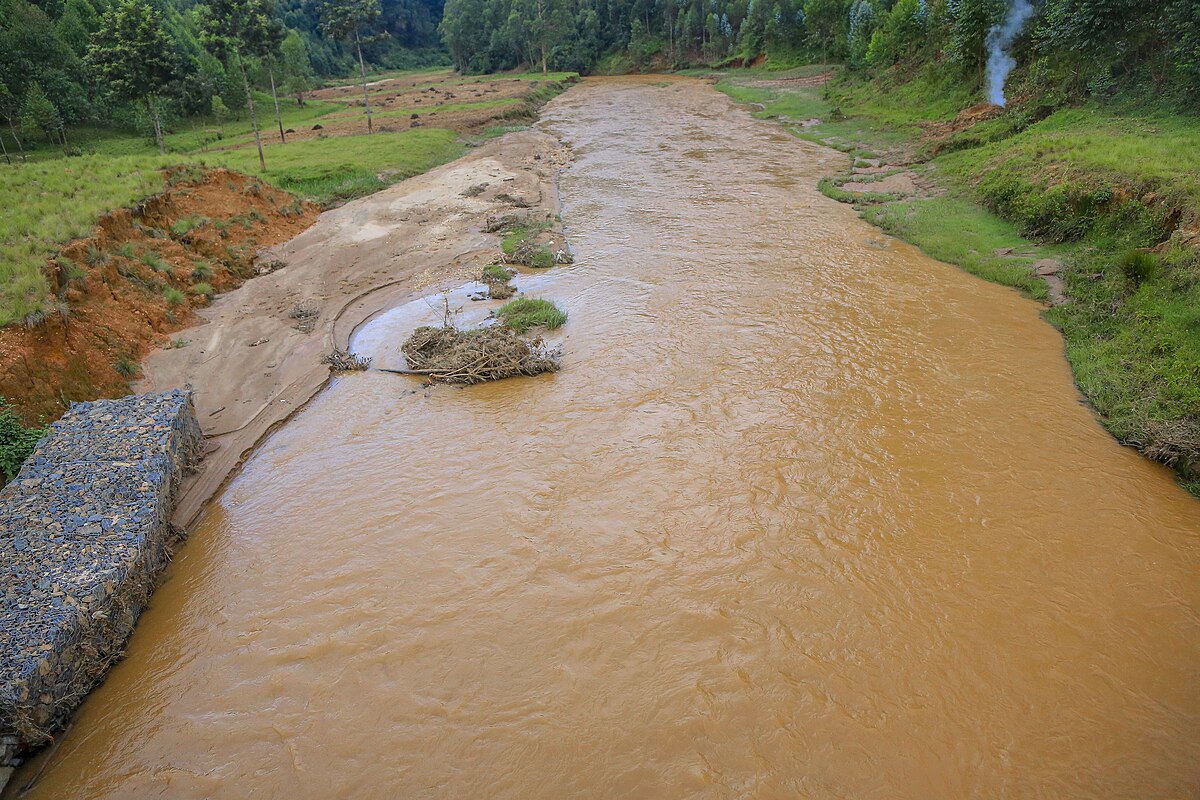Exploring Akanyaru River Rwanda : Akanyaru River is located in the western islands of Rwanda and Burundi, this flows east and north which is along the border between the two countries mentioned joining the Nyabarongo River and forming Akagera River which flows towards Lake Victoria and the source of the river Nile. Akanyaru River is a major headstreams, flowing at an altitude of 2,450 meters in Burundi, the river is a source at altitude of 2,300 meters in the south part of Rwanda. The river is covered by papyrus, containing seasonal swamp forest consisting of the upstream portion of the River has a catchment area of about 2,650 km2.
River Akanyura is unprotected wetlands surrounding the course of the river which is about 7 kilometers wide where it stretches up to Nyabarongo River and covering an area of about 2, 650 square kilometers. The swamp is fed from Cyohoha north and Cyohoha south Burundi side of the swamp has 14,600 hectares of permanent swamps, which is about 63 kilometers stretching with the swamp which is along 63 kilometers stretching of the river, where the swamp reaches 6 to 10 kilometers up to the valleys of tributaries.
The Upstream part of the River basin has average annual rainfall of about 1200 mm, wetland annual rainfall in the is about 800 mm. Rwanda receives two rainy seasons in the year , which runs from mid-September to mid-December and the other from March to May
River Akanyaru consist of numerous number of marshy habitats and papyrus swamps. The early succession phases of the river are inhabited by floating vegetation consisting of Leersia hexandra, Pistia stratiotes and Oryza barthii. The intermediate phases are a combination of Miscanthidium Violaceum, Typha australis, Cladium jamaicense and papyrus vegetation. More complex and developed habitats are dominated by Typha australis, Cyperus denudatus, Miscanthidum, Cyperus and Echinochloa Pyramidalis among others. Besides, there are also extensive swamps comprised of either pure stands or combined with shrubby vegetation’s. The average rainfall experience around the Akanyaru wetlands is about 800 millimeters annually.
The marshland is an area of many birds, great biodiversity with about 60 bird species with wetlands that inhabit in the swamp region that call aquatic and wetland habitats home including the migrant and globally threatened bird species such as the Papyrus yellow warbler, the papyrus Gonolek, the Madagascar squacco herons, the lesser swamp warbler, the great snipe, the Pallid Harrier and the lesser Kestrel among others. Not only that, river Akanyura is also a home to one species of the Guinea-Congo Forest Biome, 3 of the Afro-tropical Highland biome and over 11 species of the Lake Victoria Biome bird species.
Akanyaru river is not protected especially the valley so the land is not flooded its cultivated .The local people always engage in fishing in the river and swamps. Wetlands are used for settlement and agriculture. During the dry season local community cut and burn March vegetation, hence destroying the habitats.
There are other several activities that can be experienced on Rwanda wildlife safari at Akanyaru River, this includes;
Bird watching at river Akanyaru wetland the Akanyaru wetlands are one of the Important Bird paradise within Rwanda and a haven to over 54 species of aquatic and wetland birds . You will get an opportunity to see some of this amazing bird species which includes the Papyrus yellow warbler, the papyrus Gonolek, the Madagascar squacco herons, the lesser swamp warbler, the great snipe, the Pallid Harrier and the lesser Kestrel among others.
Explore the Marshy Habitats and Papyrus Swamps; achieve global safari can easily arrange for you amazing walks to the marshy habitant and papyrus vegetation. The shallow ends of the Akanyaru River are teeming with numerous swamps, creating a perfect habitat for various wildlife species. The wetlands are characterized by a mix of marshy habitats and papyrus swamps. As you explore, you’ll encounter different vegetation stages, from early succession phases with floating vegetation (such as Leersia hexandra, Pistia stratiotes, and Oryza barthii) to more complex habitats dominated by Typha australis, Cyperus denudatus, and Echinochloa Pyramidalis. Take a leisurely walk through these unique ecosystems and observe the diverse flora and fauna.
For you to enjoy unforgettable adventure safaris within Akanyaru River, you are required to visit with a qualified local guide who is very knowledgeable of the bird species of the area. Some of the things to carry include a camera, binoculars, a long trousers and long shirts to protect yourself from any vegetation, strong waterproof hiking boots since you’ll be walking through wetland areas, carrying enough drinking water to enable you stay hydrated and finally Follow the guidance of your local guide and respect the natural environment among others

Best time to visit Akanyaru River Rwanda
The best time to visit the Akanyaru River is during the dry season. Bird watching in Akanyaru rive can be done throughout the year but some months have more favorable conditions for birding than others. Rwanda has two major rain and dry seasons. The period between December and January is considered perfect for for birding safaris. These months fall in the dry season and are special because thousands of migratory birds come into the country to escape the harsh winter conditions in Europe and the Arctic’s.
In general river Akanyaru offer a diverse range of activities and experiences, from thrilling bird watching. River Akanyaru has its own unique charm, making them perfect destinations for travelers seeking both adventure and tranquility. So, when you visit Rwanda, be sure to explore this stunning river and immerse yourself in the natural wonders. Whether you’re a wildlife enthusiast, an adventure seeker, or simply looking for a peaceful escape, river Akanyaru have something special in store for you. Come and discover the beauty of these hidden gems, and create memories that will last a lifetime.


